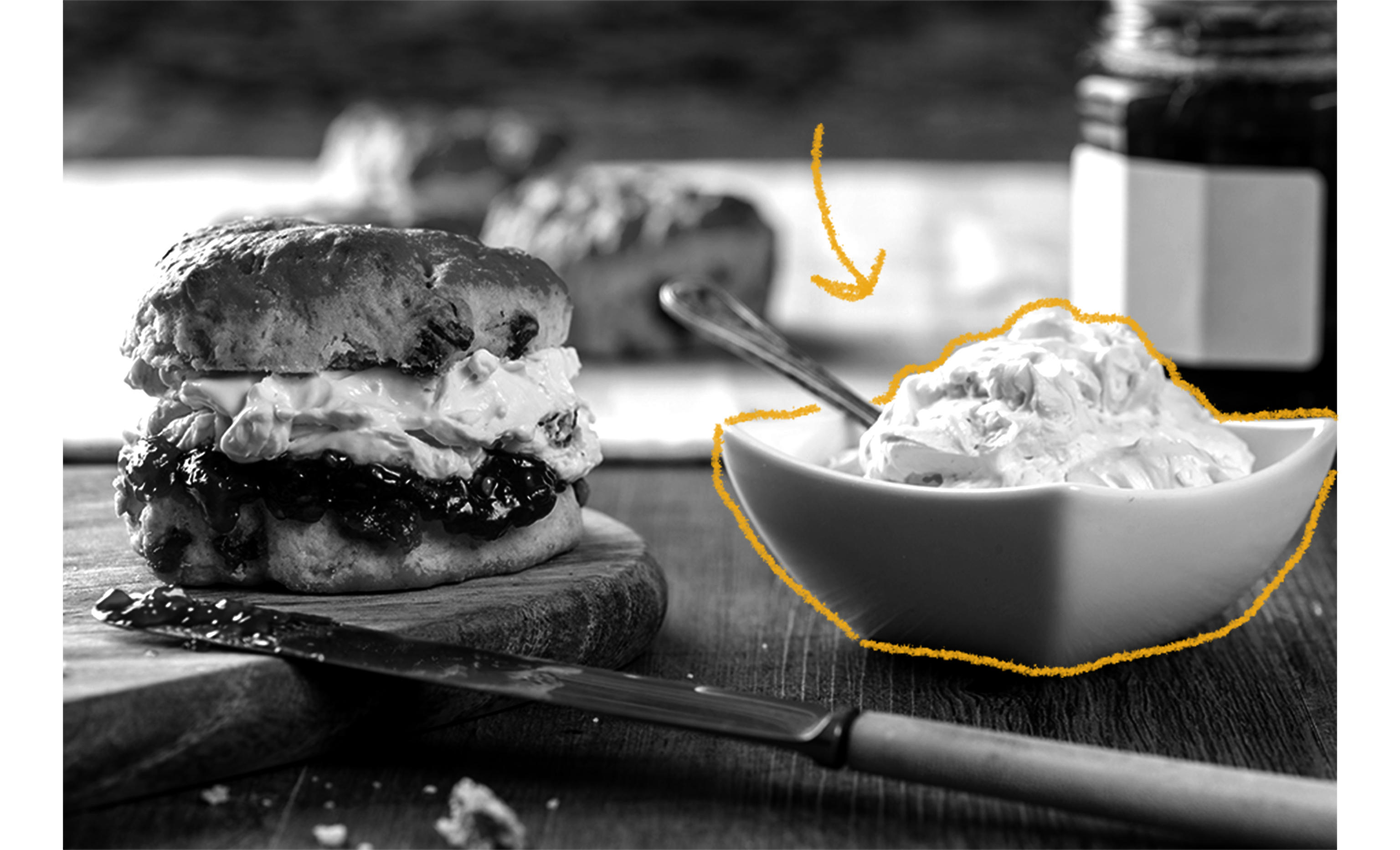Clotted cream is a traditional British spread that’s associated with southwestern England, most especially Devon and Cornwall (in fact, it’s often called Devon or Cornish cream). It’s thought that clotted cream may have been introduced to the UK by the Phoenicians nearly two millennia ago. They arrived in England seeking tin and brought with them cream made from buffalo milk, which was clotted in order to stave off spoilage and preserve it for longer. After it was introduced to England, clotted cream became heavily associated with British culture, especially in the form of cream tea. The earliest mention of cream tea is from the 11th century. In fact, the use of clotted cream in British cuisine is thought to have originated around this time in Devon, specifically at Tavistock Abbey, where clotted cream was served on bread (scones wouldn’t show up in Britain until the 16th century, and Devonshire splits were also introduced later on) and paired with strawberry preserves. Today, the practice of cream tea remains strong in England and is also popular in Australia. Notably, the order of the jam and clotted cream differs by location; Devonians spread the clotted cream on first and add the jam on top, while the Cornish apply the jam before adding the clotted cream.

Your go-to guide for weird history facts
Subscribe to the FREE daily email that makes learning about history fun.


